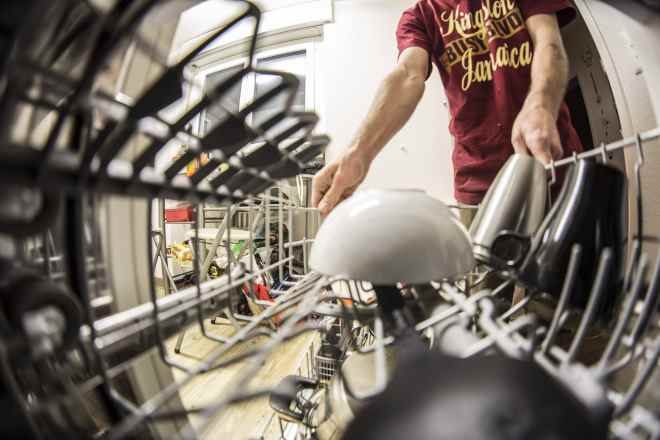Neck and Back Stiffness After Work? Simple Daily Fixes You Can Try.
Feeling stiff after a long day at your desk? You’re not alone — hours of sitting can leave your neck and back tight and sore. A few small daily changes and the right support can make a big difference.Discover simple ways to loosen up — or find trusted local services that help your muscles recover faster.

Long hours at the desk can transform an ordinary workday into a painful experience. That familiar stiffness creeping up your spine and settling into your neck by evening is more than just an annoyance—it’s your body signaling that something needs to change. Whether you work from home or in an office setting, understanding the causes of this discomfort and implementing practical solutions can make a significant difference in how you feel at the end of each day.
Why Sitting All Day Affects Your Neck and Back
The human body wasn’t designed for prolonged sitting. When we maintain the same position for hours, several problematic things happen. First, the natural curve of your spine changes as you slouch forward. This places excessive pressure on spinal discs and surrounding muscles. Second, your neck typically extends forward to view screens, creating what experts call “forward head posture”—each inch your head moves forward adds about 10 pounds of perceived weight for your neck muscles to support.
Blood circulation also diminishes during extended sitting, reducing nutrient delivery to spinal tissues and muscles. This combination of poor posture, reduced movement, and decreased circulation creates the perfect storm for stiffness and pain. Additionally, research shows that sitting for more than six hours daily is associated with increased muscle tension and decreased flexibility in the hip flexors, which can pull on the lower back and create imbalances throughout the entire spine.
Quick Daily Stretch Routine You Can Try Anywhere
Integrating simple stretches throughout your workday can make a remarkable difference in preventing and alleviating stiffness. These exercises require minimal space and can be performed right at your desk:
-
Neck Rolls: Gently lower your chin to your chest and roll your head in a semicircle from one shoulder to the other. Repeat 5 times in each direction.
-
Shoulder Blade Squeezes: Sit up straight, pull your shoulders back, and squeeze your shoulder blades together. Hold for 5 seconds and release. Repeat 10 times.
-
Seated Spinal Twist: Sitting upright in your chair, place your right hand on your left knee and your left hand behind you on the chair. Gently twist to the left, looking over your left shoulder. Hold for 30 seconds, then switch sides.
-
Chest Opener: Clasp your hands behind your back, straighten your arms, and lift slightly while squeezing your shoulder blades together. Hold for 15-30 seconds.
-
Standing Backbend: Stand with feet hip-width apart, place hands on the lower back, and gently arch backward while looking up. Hold for 5-10 seconds.
Performing this routine twice daily—mid-morning and mid-afternoon—can help maintain mobility and reduce the cumulative effects of sitting.
How to Set Up a Spine-Friendly Workspace
Your workspace configuration plays a crucial role in preventing neck and back discomfort. Start with your chair—it should support the natural curve of your spine with your feet flat on the floor and knees at approximately 90 degrees. The chair height should allow your arms to rest comfortably on your desk with elbows at about 90 degrees.
Monitor positioning is equally important. The top of your screen should be at or slightly below eye level, about an arm’s length away. This prevents excessive neck flexion or extension. If you use a laptop, consider investing in a separate keyboard and mouse so you can elevate the screen to the proper height.
For those who spend significant time on calls, a headset or speakerphone is essential to avoid cradling the phone between your ear and shoulder—a major source of neck strain. Additionally, arranging frequently used items within easy reach prevents awkward twisting and reaching that can stress your spine.
Consider incorporating a sit-stand desk if possible, allowing you to alternate between sitting and standing throughout the day. Even with a conventional desk, remember to stand up and move around for a few minutes every hour.
Relaxation Habits That Help You Recover Faster
What you do after work significantly impacts how quickly your body recovers from the day’s physical stress. Start with a gentle evening walk to increase circulation and loosen tight muscles. Even 10-15 minutes can help transition your body from work mode to relaxation.
Heat therapy is particularly effective for relieving muscle tension. A warm shower or heating pad applied to stiff areas for 15-20 minutes can increase blood flow and promote healing. For some, alternating between heat and cold provides additional relief.
Mindfulness practices like deep breathing or gentle yoga before bed can help release both physical and mental tension that accumulates during work hours. The mind-body connection is powerful—stress increases muscle tension, while relaxation allows muscles to release.
Quality sleep is perhaps the most important recovery tool. Your mattress and pillow should maintain proper spinal alignment. Side sleepers may benefit from placing a pillow between their knees, while back sleepers might place one under their knees to reduce pressure on the lower back.
Professional Help Options for Lasting Relief
When self-care measures aren’t enough, several professional treatment options can provide more substantial relief. Physical therapists can assess your specific movement patterns and posture, creating personalized exercise programs to address underlying issues. They may also use manual therapy techniques to improve joint mobility and muscle function.
Chiropractors focus on spinal alignment and may offer adjustments to address restrictions in movement. Massage therapists can help release chronically tight muscles and fascial restrictions that contribute to pain and stiffness.
Acupuncture has shown promising results for many people with neck and back pain, potentially by releasing endorphins and improving circulation to affected areas. For persistent issues, pain management specialists can provide more advanced interventions ranging from specialized exercises to minimally invasive procedures.
Most healthcare providers recommend starting with conservative approaches before considering more intensive treatments. Many people find that a combination of self-care strategies and occasional professional treatment provides the best results for managing work-related neck and back discomfort.
Incorporating these strategies into your daily routine can transform how you feel at the end of each workday. Remember that consistency is key—small, regular actions often yield better results than sporadic, intensive efforts. By understanding why sitting affects your body, implementing strategic movement throughout the day, optimizing your workspace, practicing effective recovery habits, and knowing when to seek professional help, you can significantly reduce the impact of desk work on your physical wellbeing.
This article is for informational purposes only and should not be considered medical advice. Please consult a qualified healthcare professional for personalized guidance and treatment.




